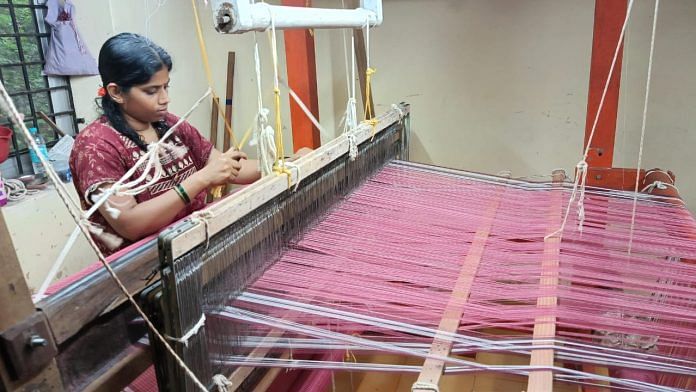T hirteen years ago, Goan designer Wendell Rodrigues propelled the traditional Goan handloom art of Kunbi to be the talking point of the fashion world by featuring a Kunbi-based design in his collection for the Wills Lifestyle India Fashion Week. Rodrigues’ design sparked a few sporadic, localised attempts at reviving the indigenous Goan fabric style. Now, for over a year, 45 women of rural Goa, all first-generation weavers, have been taking the effort forward in a more systematic and organised way with government backing.
The women, working in four centres across Goa, have come together as a cooperative society—the Goa Handloom Weavers Cooperative Society Limited—to weave and sell Kunbi sarees and shawls, with the help of a Union government-funded incubator, FiiRE (Forum for Innovation Incubation Research and Entrepreneurship) and the National Bank for Agriculture and Rural Development. The aim is to find a sustainable market for Kunbi sarees and ultimately aim for a Geographical Indication (GI) tag, a name or sign given to certain products that relate to a specific geographical location. A GI tag is also seen as a certification that a particular product is being produced as per traditional methods and has a particular reputation because of its geographical origin.

The society applied for a GI tag last month. The Kunbi sarees is a traditional saree with a plain body and an intricately woven border and pallu, all dyed in natural colours. It was associated with Goa’s i.
















